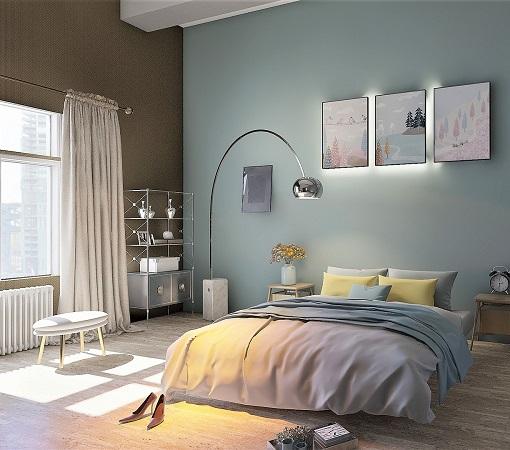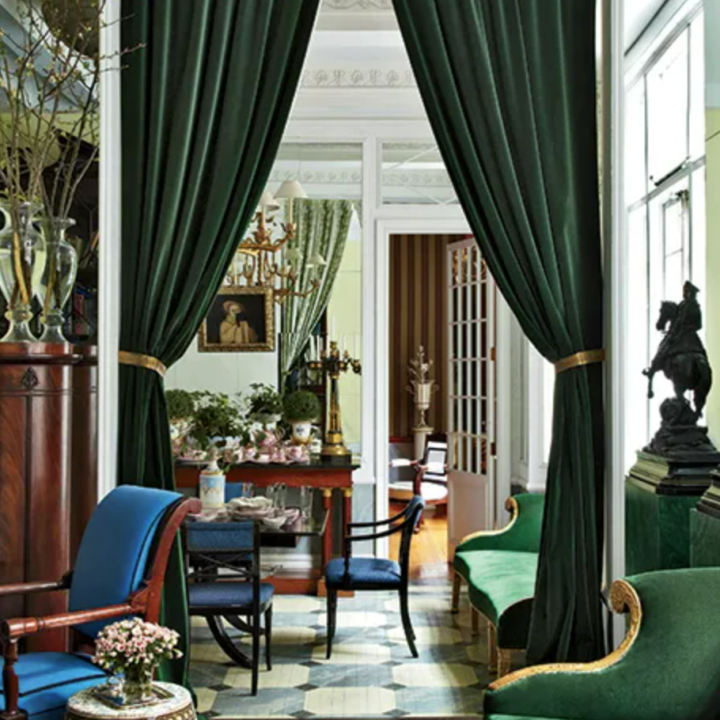Spiffy Speak
PUDDLED CURTAINS & DRAPES: STYLING TIPS, PHOTOS & IDEAS
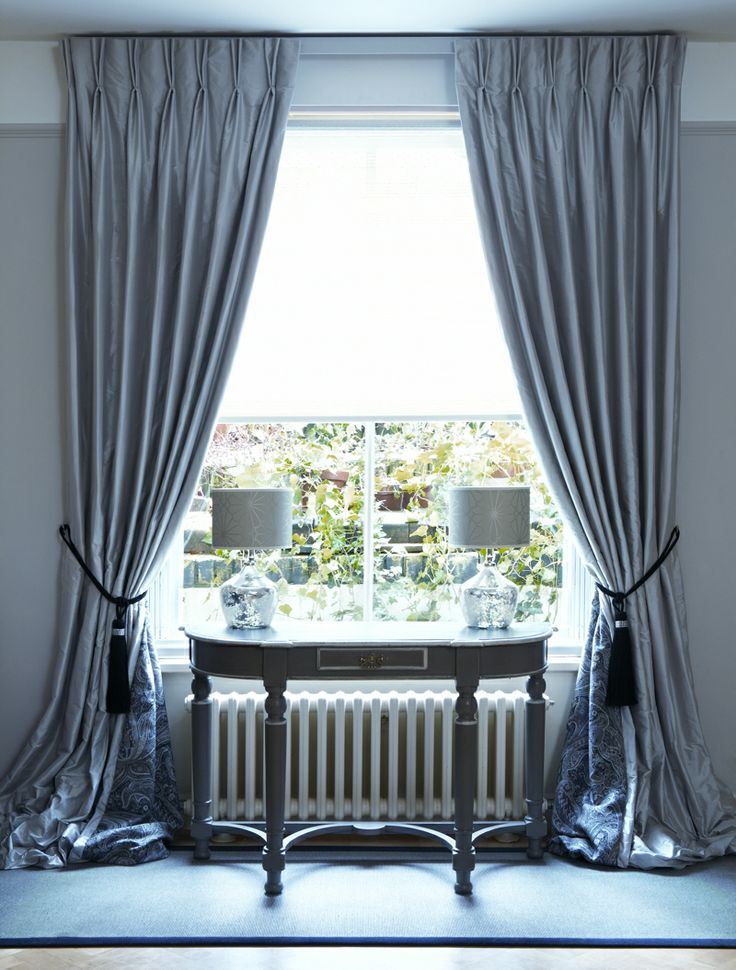
Like your home to look like a still from a palace of the nineteenth century embellished tastefully with flowing regal drapes? Or, though a modernist at the core, you gladly welcome a masterful stroke of glamor sheathed in sophistication? Wherever you find yourself on the scales of traditional maximalism and modern minimalism, you’ll find a style of puddled drapes suitable to your taste and needs. And if you’re looking for styling tips for puddled curtains and drapes, this blog is for you.
Whether the drapery extends just a tad bit on the floor or forms an extravagant pool with gorgeous swirls and folds, puddled drapes speak of an intentionally achieved look for a space that’s very precious to you. If you want to puddle your drapes in a way that echoes your style but without coming in the way of function, read on.
Order custom curtains and drapes from Spiffy Spools online in any size. Pick from over 3,000 fabrics and patterns!
What Are Puddled Curtains? What Do You Achieve by ‘Puddling’?
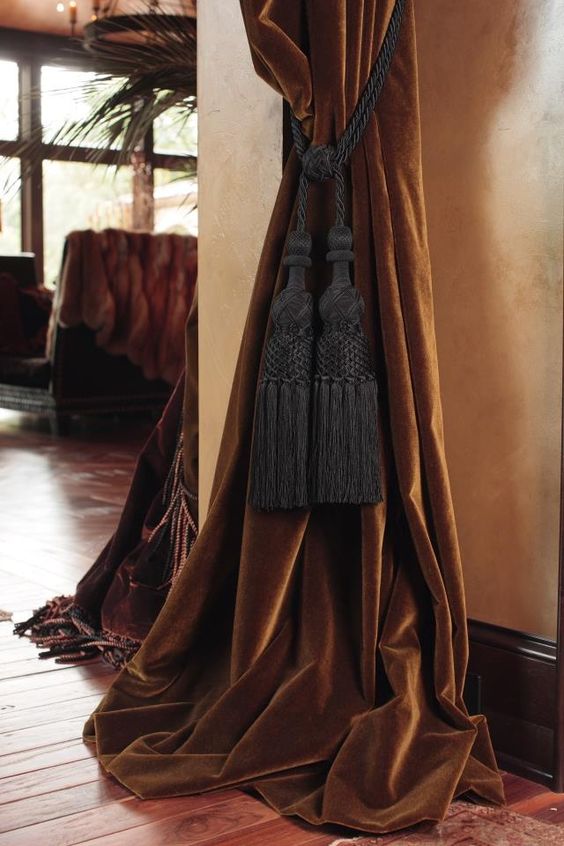
Puddled curtains fall in the category of floor-length curtains that uphold the ‘more is more’ concept of interior design. In contrast to most curtains that graze or hang just above the floor, puddled curtains “pool” or gather on the floor. To achieve a puddled look, you need an excess of fabric in terms of length.
It is believed that puddled drapes were a way of showing off wealth in the early eighteenth and nineteenth centuries when pure silk and velvet were rare and expensive. Perhaps that’s why, at the turn of the twentieth century when Victorian excesses were getting purged, puddled drapes got confined to formal rooms, banquet halls, and palaces.
Today, however, puddling is not a financial statement but a design statement. The exquisite spillovers are considered an overdose of softness and glamor rather than an elitist display of opulence.
But hang on, don’t conclude that puddling has only got to do with aesthetic appeal. The excess fabric of the puddled drapes has functional roles too. Digging deeper for the ‘why’ reveals how tempting they can get to be even to diehard minimalists because they have solid purposes to serve, such as –
- BETTER INSULATION: The excess fabric adds weight to the drapery and piles up, limiting their mobility and efficiently reducing the fluttering during windy days. In extremely cold weather, it also means that cold drafts will be well-contained at the window itself, not allowing them to force in at the jambs or the sill. And that means lesser power consumption and lower bills.
- EFFICIENT LIGHT CONTROL: In bedrooms and media rooms, light leaks from under the drapes can ruin the whole experience of the space, despite all the care that was invested in selecting the fabric. Puddled drapes seal the bottom of the window seamlessly so that those disturbing sharp glows are canceled.
- FORGET LENGTH WOES: With fabrics that lack dimensional stability, it is hard to maintain the finished length of the drapery around the year. Fabrics like pure linens can stretch and shrink as per the seasons and the humidity levels, sometimes unevenly to make the scenario worse. Care to puddle them a few inches, and you can care less about the length.
- CLEVER COVER-UPS: Sometimes, it’s the architectural flaws that get you. One of the biggest worries homeowners deal with when ordering curtains is about measuring the length with precision. Think of those uneven floors and erroneously aslant windows that you can never cover with floating curtains flawlessly. The unequal gaps between the curtains and the floors will stare at you with their sharp light glows even if you choose to ignore them. Shoot these pains if you’re ready to puddle the curtains.
- UNDERSCORE THE ‘FORMAL/CASUAL’ MOOD: No matter what the mood of the space, puddled drapes can build over the original tenor to exaggerate it intentionally. When dressed in statement fabrics like silk, brocade, or damask, they color the space with a regal flair. And, they do just the opposite when designed with homely and natural fabrics like cotton and linen. The fluffed-up fabric let loose on the floor gives off a very relaxed, easy-going vibe to the space. And more so, when done with elegant sheer panels as the translucent fabrics pile up gracefully, making the whole space ooze with whimsy and softness.
- TIE BACK IN STYLE: Lastly, if you intend to hold the drapes with a tieback securing a stylish swag at the top, the excess trails help the most distant end of the drapery to still reach the floor. Should the curtains stop at floor length, the inward side of the panels would come across as skimpy and under-finished as they would rise above floor level when tied back.
Ah! With all these tempting merits of puddled drapes, who could say no to them? And yet, puddled drapes are not for everyone, every space, or every home. Well, we’re not talking about the minimalistic style of puddling but the elaborate ones where the drapes really ‘pool’ on the floor. Here are some reasons why you may do better by foregoing overly generous puddling –
- The excess fabric trails snag and drag on the floor, making it difficult to operate them. For curtains that need to be moved often, consider float curtains or ‘break puddle’.
- If you have toddlers and pets, puddled drapes may cause tripping accidents. Besides, your fur babies’ hair sheds can get clogged in the ‘pools’, making frequent cleaning mandatory. Incorporate puddled drapes carefree in adult rooms where they have no access.
- Puddled drapes take up some area of the floor. And you also need to designate a few inches more for clearance to avoid stepping on the puddles. So, refrain from introducing puddled drapes to space-constricted areas that have frequent footfall like hallways and tiny rooms.
- In the case of bathroom or laundry room curtains which are in wet areas, puddled drapes can be hard to maintain without mold and mildew. In kitchens, they can cause or aggravate fire hazards.
If these red flags don’t show themselves in your situation, or if you are determined to work around them, go all-out carefree. Depending on the puddling style you wish to achieve—as we’ll soon discuss— consider ordering drapes with lengths increased by 1 to 18 inches beyond floor length.
READ MORE: FLOOR TO CEILING CURTAINS: A COMPLETE GUIDE
Choose a Curtain Puddling Style
There are three primary curtain puddling styles. For further customization, each style has its own unique variations as well. Let’s take a look:
Break Puddle
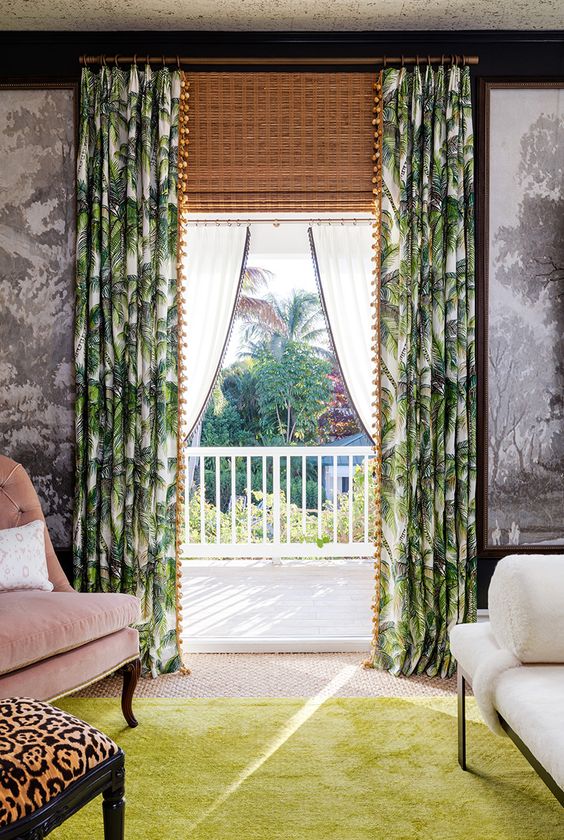
Also known as “break length,” this is the most minimalistic style of puddling. The drapes touch the floor and extend an inch further. An exercise in elegant restraint, one-inch puddle breaks work best with laid-back fabrics such as linens and cottons.
Although you don’t really get to ‘pool’ the fabric, that little excess does make a difference. The curtains make a seamless contact with the ground which makes it a foolproof remedy for uneven floors. You also get to cancel light leaks from the bottom without trailing the drapes more than you can afford to handle.
Also, this style of puddling is to be most preferred for more frequently operated drapes, if your heart is set on puddling them. With the minimized risk of tripping accidents, the break puddle is also the most suitable style for homes with kids and pets. They are also relatively easier to keep clean as they don’t trap as much dirt and dander as other elaborate styles.
Medium Puddle
If you’d like a little more character than what you get from the relatively minimalist puddle break but are shying away from a full-on, dramatic puddle, the medium puddle is a great option to consider. Medium puddle curtain styles require curtain length to be increased by two to five inches.
A medium puddle can be dressed in a couple of styles:
CASUAL BREAK
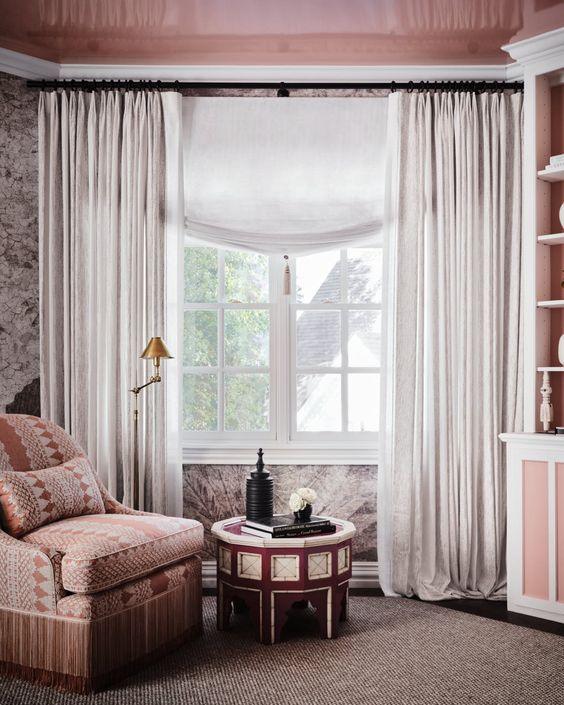
For this style, simply hang your curtains and allow your pleats to lie naturally. This is the simplest puddling style in the lineup, as they require no arrangement.
TAILORED BREAK
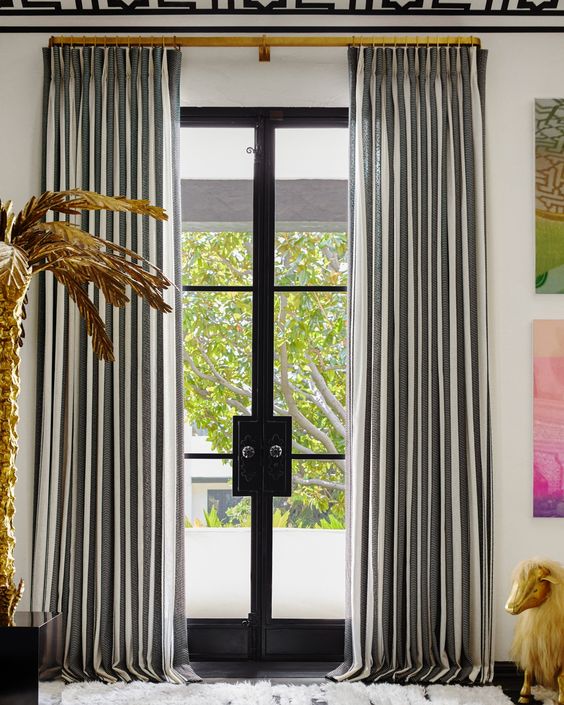
Select pleated drapes that fall uniformly or heavyweight drapes that contain multiple linings. Once hung, arrange the fabric so that it bends at the hem of each pleat, creating a neat stack of folds along the floor.
True Puddle
Finally, a true puddle will provide you with the most dramatic effect. This puddled curtain style can be achieved by extending the curtain length between 6-18 inches. Keep in mind, the longer the length, the more striking your drapery will be. Here are the different ways you can arrange a true puddle:
FLOWING PUDDLE
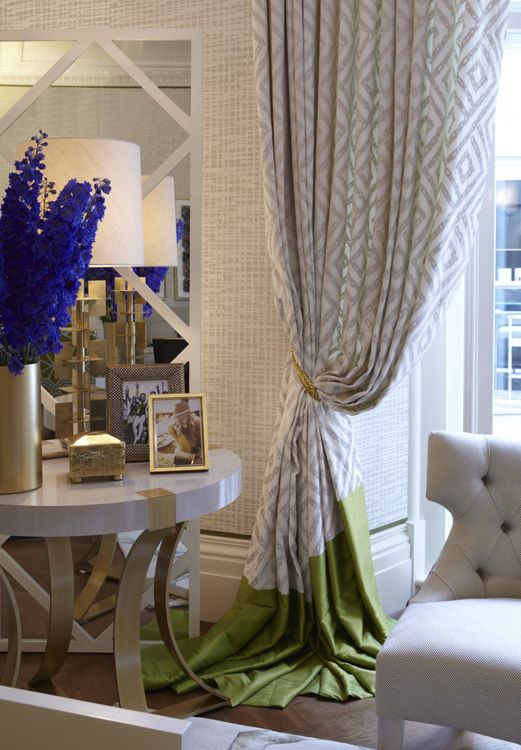
This puddle style is reminiscent of the trail of a wedding gown. It’s elegant, bold, and luxurious. To create flowing puddles, you must train your drapes to fold uniformly. Then, allow the fabric to lie naturally and flow out from the panels to create the perfect pool. The flowing puddle look is relatively easier to arrange than other methods of elaborate puddling.
FOLD-UNDER PUDDLE
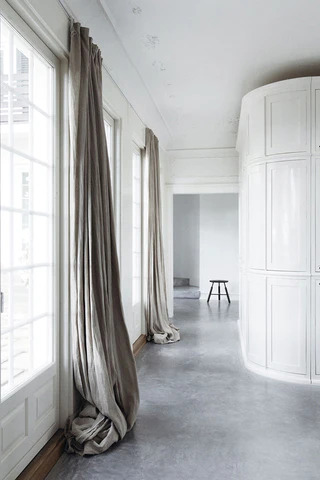
Just as the name sounds, with this style, you’ll fold the excess curtain fabric underneath itself. First, form the folds of the drapes and then fold them backward after fluffing the fabric to increase the volume. The result is a soft, cloud-like shape that provides a dreamy effect. Note that this kind of puddle requires at least 12-16 inches of extra length.
STACKED PUDDLE
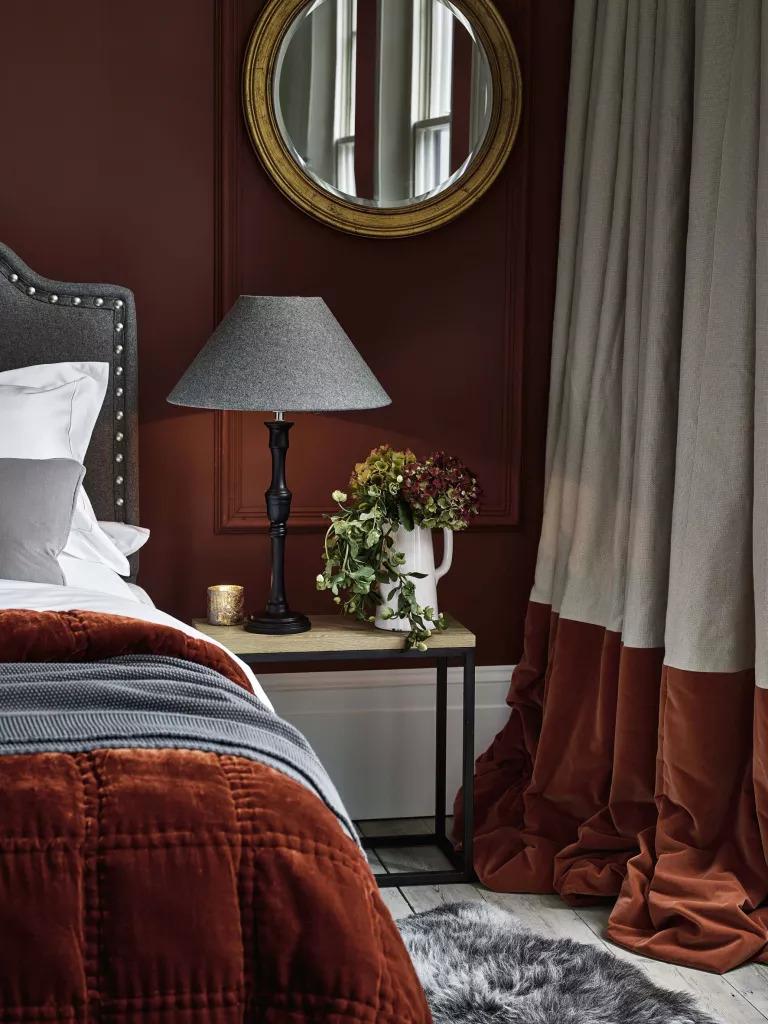
Instead of allowing the fabric to flow outwards, it will be piled vertically. To do so, lift the curtain into a fold, drop it down, and repeat, stacking the folds on top of each other. It will likely take time for your curtains to maintain this type of puddle. Just give it some time and readjust as needed. Over time, the curtains can be “trained” to retain the puddle.
READ MORE: CURTAINS VS DRAPES: WHAT’S THE DIFFERENCE?
Puddled Drapes to Match Your Décor
You know now that puddling drapes is a technique and an art that requires a dexterous hand and creative mind to etch it with perfection. As much as the style of puddling must suit your home’s functional requirements, they must also voice your decor style. And that goes beyond choosing the style of the puddle to the choice of fabric, hardware, heading style, and accessories. Let’s walk you through some of our stylists’ tips to match your puddled drapes perfectly with your personal decor style.
For a Formal Décor Setting…
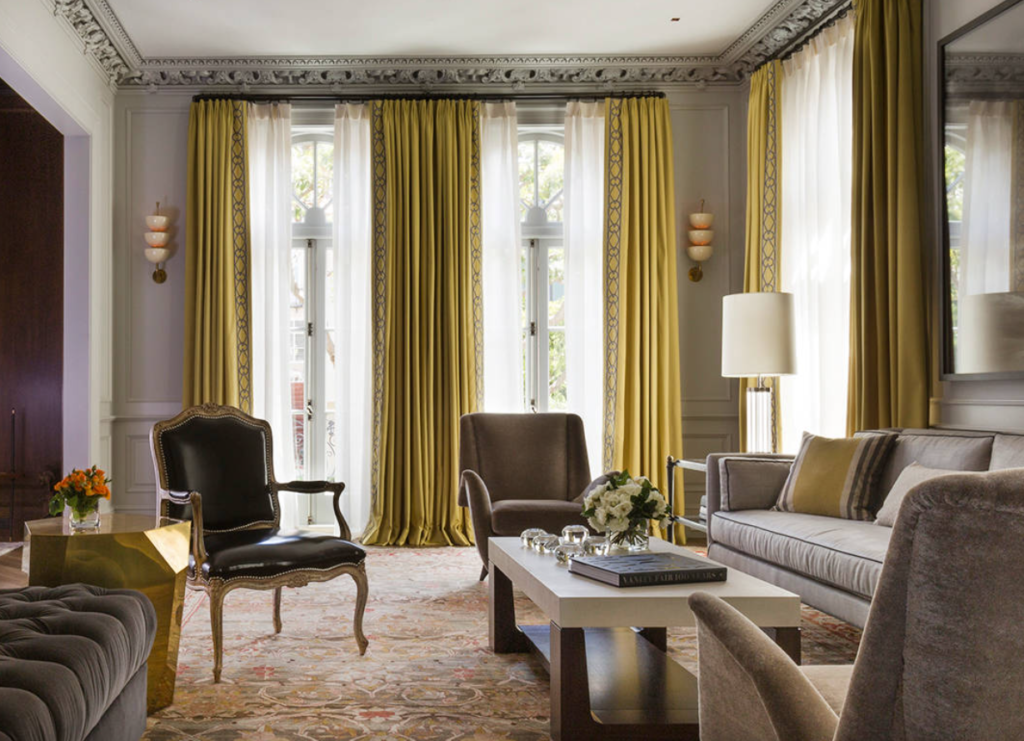
Consider dressy fabrics such as silks or velvets for spaces like the living room and dining room. The grandeur and resplendence of these fabrics marry perfectly with the opulence associated with a puddled look. The true exaggerated puddled look works best with these fabrics.
Choose statement hardware that will stand out and complement the premium look of the drapes. Consider an elaborate style of the header such as the triple pinch pleats, goblet pleats, or euro triple pleats that can offer uniform pleats for creating the most visual impact with puddled drapes.
If you want to go all-out, consider zhuzhing them up further with suitable fancy trimmings such as tassels, braids, and fringes. They will fine-finish the drapes on an exalted note and of course, get you a focal point for the space.
If however, your design style is a pared-back, simplistic one, choose to keep a tight leash and opt for any two of these ideas. For example, hang euro triple pleats silk curtains in a glamorous palette on sleek brass hardware and call it a day.
For a Casual Décor Setting…
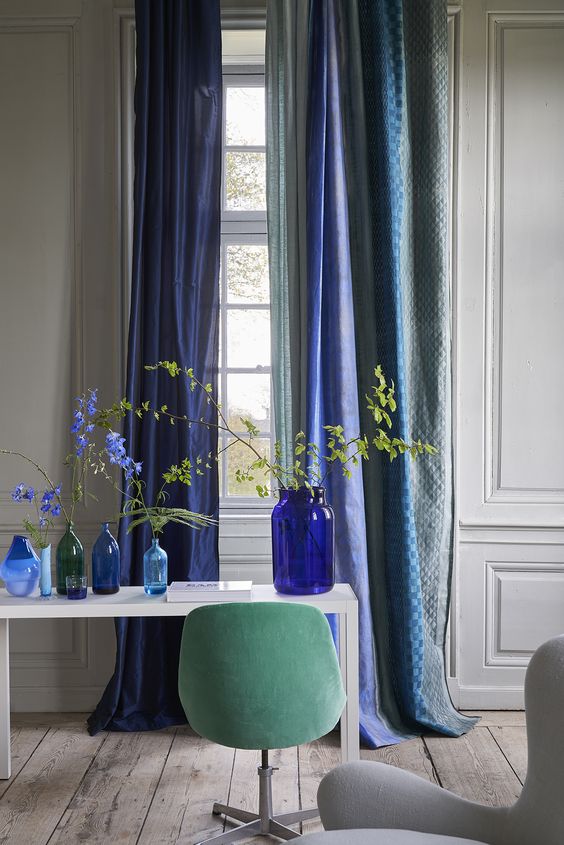
Consider laidback and lightweight fabrics such as linens, cottons, or sheers. These fabrics offer a look that’s airy and relaxed. One-inch break puddle works best with this set of fabrics.
Go for a simple heading style like flat panel tops or architectural ones like double pinch pleats, ripplefolds, or euro double pleats. These styles lend uniform folds but with a restrained indulgence in detailing.
Amp up the relaxed feel further by adding cotton pompom trims or colorful ribbon trims at the lead edges. Keep the hardware sleek and for the most minimalistic setup, opt for a palette that blends into the space rather than stand out. Alternatively, you may also go for tracks that will disappear into the architecture and keep the orientation of the decor simple and minimalistic.
SHOP NOW: CURTAIN TRIMS & TASSELS FROM SPIFFY SPOOLS
Order Custom Curtains from Spiffy Spools
Puddled curtains are not a thing of the past – they are here and forever. And with this guide, we hope you have all the information and inspiration you need to style your puddled curtains and drapes most suitably for your home. If you’re ready to dress your windows in one of these gorgeous looks, Spiffy Spools makes it easy to order custom curtains to your exact specifications. Explore our site to find the perfect options for your space in any length—and don’t hesitate to contact us with any questions!
READ MORE: HOW TO DECORATE CURTAINS: IDEAS & TIPS


